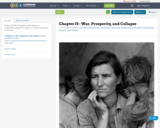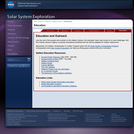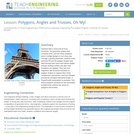
Chapter 15 War, Prosperity, and Collapse is a community college level chapter of a history book used in the class.
- Subject:
- History
- Material Type:
- Homework/Assignment
- Lecture
- Reading
- Textbook
- Date Added:
- 02/07/2017

Chapter 15 War, Prosperity, and Collapse is a community college level chapter of a history book used in the class.

This subject provides an introduction to the mechanics of materials and structures. You will be introduced to and become familiar with all relevant physical properties and fundamental laws governing the behavior of materials and structures and you will learn how to solve a variety of problems of interest to civil and environmental engineers. While there will be a chance for you to put your mathematical skills obtained in 18.01, 18.02, and eventually 18.03 to use in this subject, the emphasis is on the physical understanding of why a material or structure behaves the way it does in the engineering design of materials and structures.

As part of this activity, students learn about geologic processes on Earth in order to interpret surface features recently seen on Europa by NASA's Galileo spacecraft. Materials presented here include a vocabulary list, geology jigsaw puzzle, review questions, and links to related sites.

This course will study the question of Global Architecture from the point of view of producing a set of lectures on that subject. The course will be run in the form of a writing seminar, except that students will be asked to prepare for the final class an hour-long lecture for an undergraduate survey course. During the semester, students will study the debates about where to locate “the global” and do some comparative analysis of various textbooks. The topic of the final lecture will be worked on during the semester. For that lecture, students will be asked to identify the themes of the survey course, and hand in the bibliography and reading list for their lecture.

This class introduces the multidisciplinary nature of archaeology, both in theory and practice. Lectures provide a comparative examination of the origins of agriculture and the rise of early civilizations in the ancient Near East and Mesoamerica. The laboratory sessions provide practical experience in aspects of archaeological field methods and analytical techniques including the examination of stone, ceramic, and metal artifacts and bone materials. Lab sessions have occasional problem sets which are completed outside of class.

Students take a close look at truss structures, the geometric shapes that compose them, and the many variations seen in bridge designs in use every day. Through a guided worksheet, students draw assorted 2D and 3D polygon shapes and think through their forms and interior angles (mental “testing”) before and after load conditions are applied. They see how engineers add structural members to polygon shapes to support them under compression and tension, and how triangles provide the strongest elemental shape. A PowerPoint® presentation is provided. This lesson prepares students for two associated activities that continue the series on polygons and trusses.